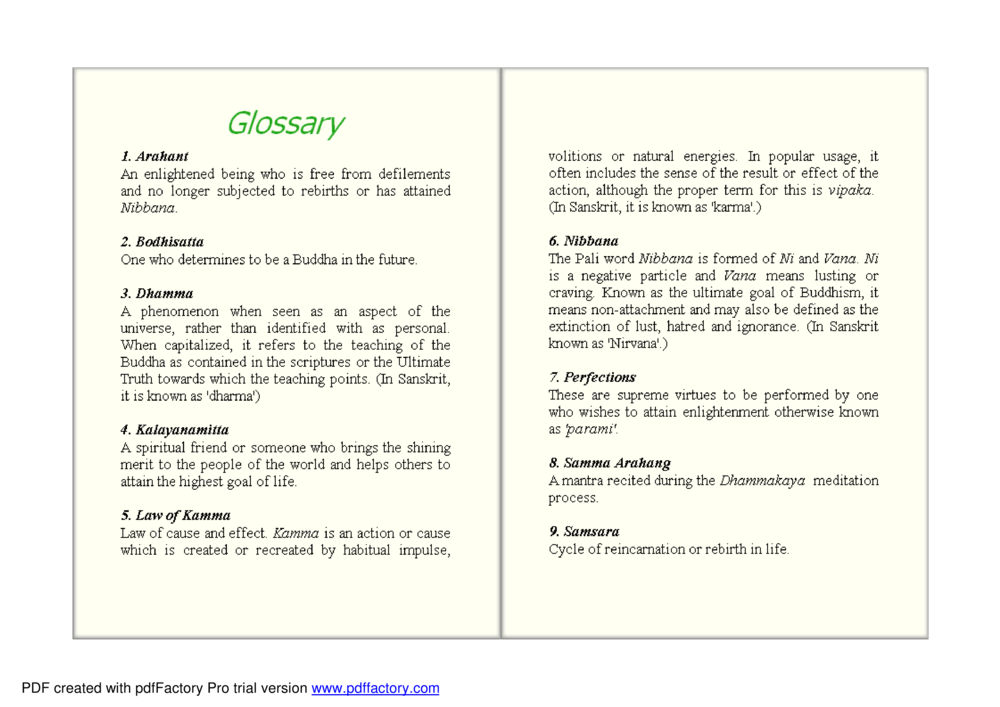Glossary of Key Buddhist Terms : หน้า 52/62
Lovely Love : หน้า 52/62 Explore essential Buddhist concepts including Arahant, Nibbana, and the Law of Kamma.
3 ครั้ง

สรุปเนื้อหา
This glossary provides definitions of key terms in Buddhism, including Arahant, an enlightened being who has attained Nibbana, Bodhisatta, a future Buddha, and Dhamma, referring both to ultimate truth and the Buddha's teachings. Key concepts like the Law of Kamma, which highlights the cause-and-effect nature of actions, and Nibbana, the ultimate goal of Buddhism associated with non-attachment and liberation from suffering, are also explored. The glossary includes terms related to spiritual friendship (Kalayanamitta) and the cycle of rebirth (Samsara), along with the supreme virtues (Perfections) necessary for enlightenment. Learn about the importance of these concepts for spiritual development and meditation practices.
หัวข้อประเด็น
-Arahant
-Bodhisatta
-Dhamma
-Kalayanamitta
-Law of Kamma
-Nibbana
-Perfections
-Samma Arahang
-Samsara






























































